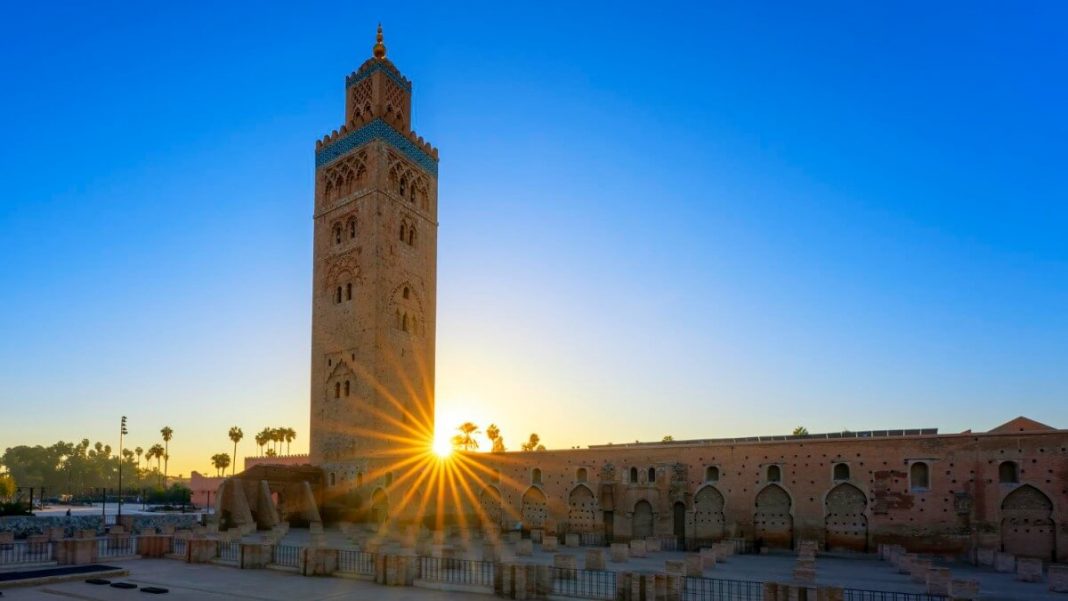Historic sites in Marrakech, including Bahia Palace, Badi Palace, and the Saadian Tombs, reopened to tourists on Sunday, October 8, a month after a devastating earthquake struck Morocco, claiming the lives of nearly 3,000 people.
Looking ahead, Siham Fettouhi, the Director of the Morocco Tourism Office for the USA and Canada, revealed that Morocco is still hosting its most prestigious event of the year, The 2023 World Bank and IMF annual meeting, in the second week of October, VisaGuide.World reports.
“We’ve been hosting more and more events every year, and the proof of that is that annual conference, we’re talking about more than 14,000 people coming into Marrakech this week,” stated Fettouhi.
Certain areas in the city of Marrakech, Morocco, are currently inaccessible to the public. This restriction is primarily a result of incidents that occurred in the mountains, which have affected access to specific locations in Marrakech, as opposed to being directly related to events that took place within the city itself, Fettouhi explained.
In 2023, Morocco has shown a positive trend in its tourism sector, as from January to August, the country warmly welcomed 10.2 million travellers. There is even a possibility that Morocco could surpass its pre-pandemic level of 13 million visitors this year despite the recent earthquake.
“People are still coming. People do understand that it’s an earthquake. It’s not a virus or something else that people don’t understand,” she said.
In recent decades, Morocco has evolved into a distinctive destination that offers a wide range of experiences, including exploring ancient ruins, immersing in rich cultural encounters, and trekking through the majestic Atlas Mountains, according to numerous tour operators. This has not gone unnoticed, as Spanish consulting firm Bloom Consulting ranked Morocco as the third-best tourism destination in Africa.
Traditionally, travellers used to focus on cultural tours and often paired up Morocco with visits to renowned countries like France and Spain. However, as Michael Edwards, Managing Director of Explore Worldwide, points out, “More recently, Morocco has become a destination of choice, whereas before it was more of an add-on.”
The Moroccan government adopted a strategic approach with the goal of attracting 17.5 million tourists and generating $12 billion in revenue by 2026. To achieve this, between 2023 and 2025, the government plans to invest $2.7 billion in various facets of tourism, which include hotels, airports, training, and road infrastructure.
A substantial portion of the investment will be directed towards training programs designed to cater to the diverse markets. Notably, Morocco has experienced significant growth in tourist arrivals from countries such as China, South Korea, India, and the United States.
What also makes Morocco attractive is its well-developed infrastructure for tour circuits offering top-notch guiding services and its accommodation options, explained Kelly Torrens, vice president of product for Kensington Tours.
Showing its commitment to accommodating more visitors, over the past decade, Morocco significantly increased its hotel capacity, going from 200,000 beds to over 286,000.
Morocco’s tourism greatly boosted in 2006 when it signed an aviation agreement with the European Union, said Siham Fettouhi, the Director of the Morocco Tourism Office for the USA and Canada. The agreement allowed airlines from both the EU and Morocco to operate flights between EU airports and Morocco without any limitations.
As a result, the number of airlines flying to Morocco increased from 24 to 61 between 2004 and 2019. The number of weekly flights also went up from 400 in 2000 to 1,521 in 2019, and the international cities connected to Morocco’s airports increased from 48 to 153 between 2004 and 2019, making Morocco more accessible to travellers.
International travel to Morocco bounced back beyond its pre-pandemic levels. According to the Morocco Airports Authority, more than 11 million international travellers flew through the city in the first half of 2023. This represents a notable seven per cent increase compared to the 10.2 million travellers in 2019.
“Pretty much every airport in the country is busier than it was in 2019, and by a lot,” stated Skift Airline Weekly Senior Editor Jay Shabat.
